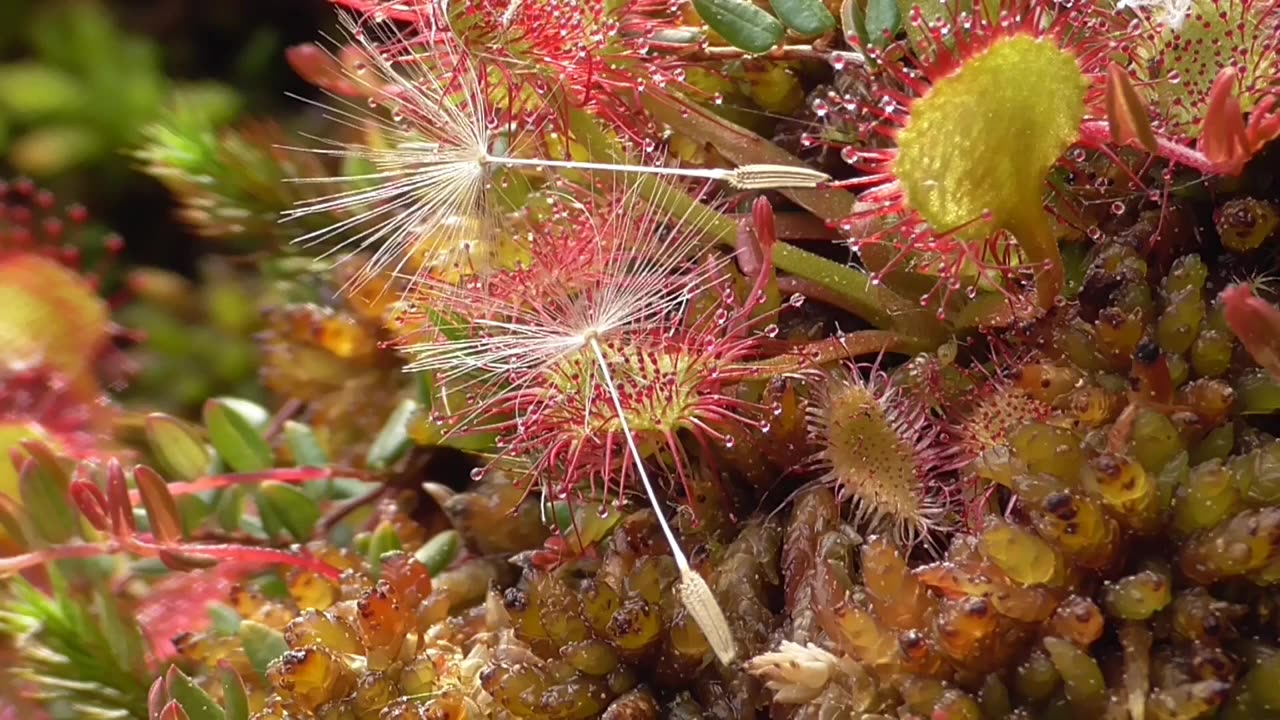Premium Only Content

Round-leaved Sundew Catches Fies
Occurred on May 22, 2016 / Eifel, Germany
Info from Licensor: "The Round-leaved Sundew at Work
I am Lothar Lenz, a nature photographer with heart and soul, and I am lucky enough to live in a small cul-de-sac village in the Eifel - surrounded by fields, forests and stream valleys, just a stone's throw from the Moselle valley. Here I can experience nature in all its diversity and observe some of the most fascinating animals right on my doorstep: Black storks, wildcats and eagle owls are my permanent neighbors. In summer, my garden is full of hornets and wasps, which I capture with my camera, whether in impressive close-ups or exciting video sequences. This closeness to nature inspires me every day and drives me to capture the beauty and uniqueness of our environment in my photographs. My desire is to inspire and motivate others to get involved in protecting this wonderful world - be it in distant regions or right on their own doorstep.
I observed and filmed how flies landed on the sticky, round leaves of the Round-leaved Sundew (Drosera rotundifolia) and became trapped in its adhesive mechanisms. This behavior is a fascinating example of the adaptations of carnivorous plants to nutrient-poor soils.
The scene begins with flies approaching the shimmering, red-green leaves of the sundew. The leaves are covered in glistening droplets on tentacle-like structures, which resemble dew and likely attract insects through their shine and possibly a sweet scent. Once the flies land, they touch the sticky droplets with their legs and bodies. Initially, this contact seems manageable for the flies, but with each movement they make to free themselves, they come into contact with more tentacles and adhesive droplets.
Within a short time, the flies' movements become increasingly restricted. The tentacles begin to slowly bend toward the trapped prey, a process that is particularly striking in slow motion. This process can take several minutes to hours, depending on the size and strength of the insect. Eventually, the fly becomes completely immobilized, stuck motionless on the leaf.
In the hours following the capture, the sundew secretes digestive enzymes that break down the fly. The plant absorbs the released nutrients, particularly nitrogen and phosphorus, through its leaves. This process is a remarkable adaptation to the nutrient-poor environments where the Round-leaved Sundew thrives.
The filmed behavior vividly demonstrates the efficiency and elegance of this carnivorous plant. It highlights how plants have developed active strategies to survive in extreme habitats, capturing and digesting animal prey to meet their nutritional needs."
-
 8:13:39
8:13:39
Grant Cardone
11 hours ago10X Business Summit Day 2
94.8K1 -
 1:51:26
1:51:26
SternAmerican
7 hours agoElection Integrity Town Hall - Lee County with Raj Doraisamy of Defend Florida 2:00pm Est
44.4K3 -
 12:01
12:01
T-SPLY
9 hours agoBREAKING - Jasmine Crockett Under Investigation For Fraudulent Campaign Donations
33.3K38 -
 39:07
39:07
Steph & Kayls
7 hours agoFrom Spicy Content to Sleepless Nights: The Chaos of Being First-Time Parents & Creators | Ep. 1
28.3K4 -
 1:36
1:36
Nick Shirley
9 hours ago $2.69 earnedThese Anti-Trump and Elon Protesters are Idiots
35.8K49 -
 17:08
17:08
World2Briggs
1 day ago $1.59 earned10 Worst Cities to Move if You Hate Yourself.
27.6K9 -
 13:32
13:32
megimu32
1 day agoKitKat vs. Twix: One Breaks, One Bites… Who Wins?
29.7K12 -
 24:04
24:04
Link to the Light
21 hours ago $0.51 earnedTop 10 Most Anticipated Games of 2025 - Link to the Light
18.6K3 -
 23:00
23:00
Ohio State Football and Recruiting at Buckeye Huddle
21 hours agoOhio State Football: Spring Game Recap | Biggest Concerns for Buckeyes?
12.1K -
 11:57
11:57
Fit'n Fire
8 hours ago $0.28 earnedGriffin Armament Dual-Lok HRT-762 First Looks
8.79K1